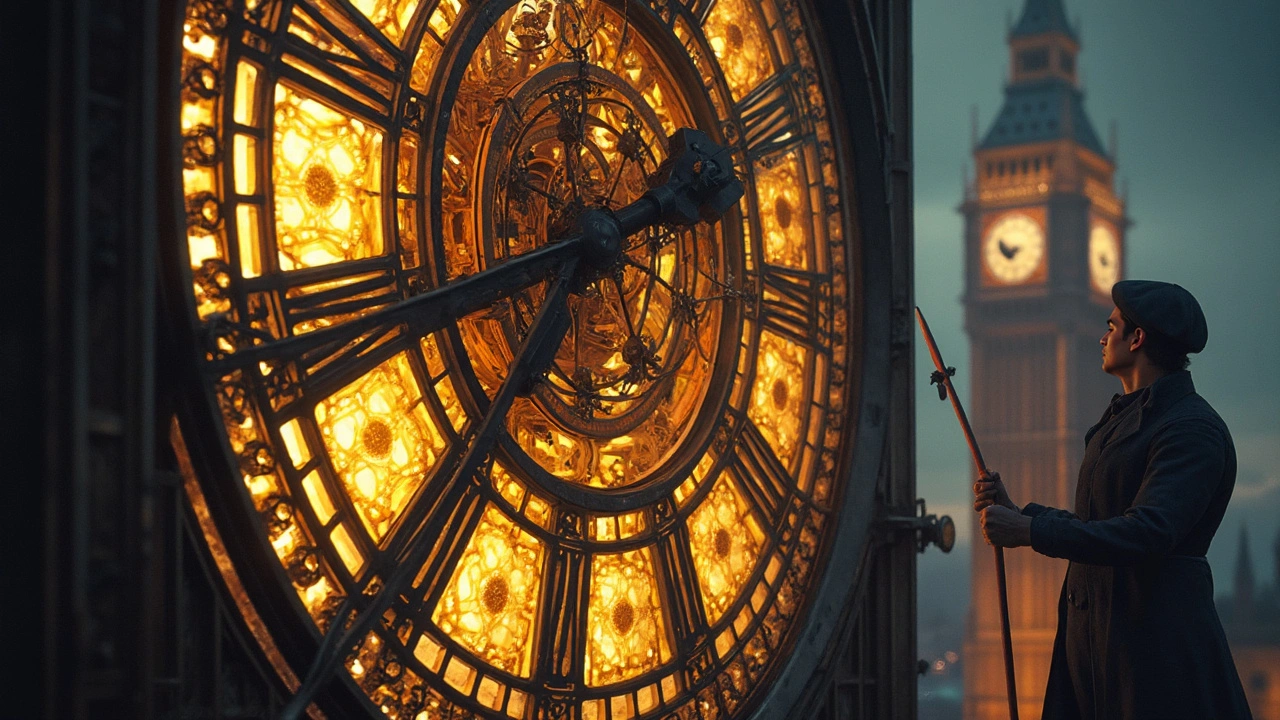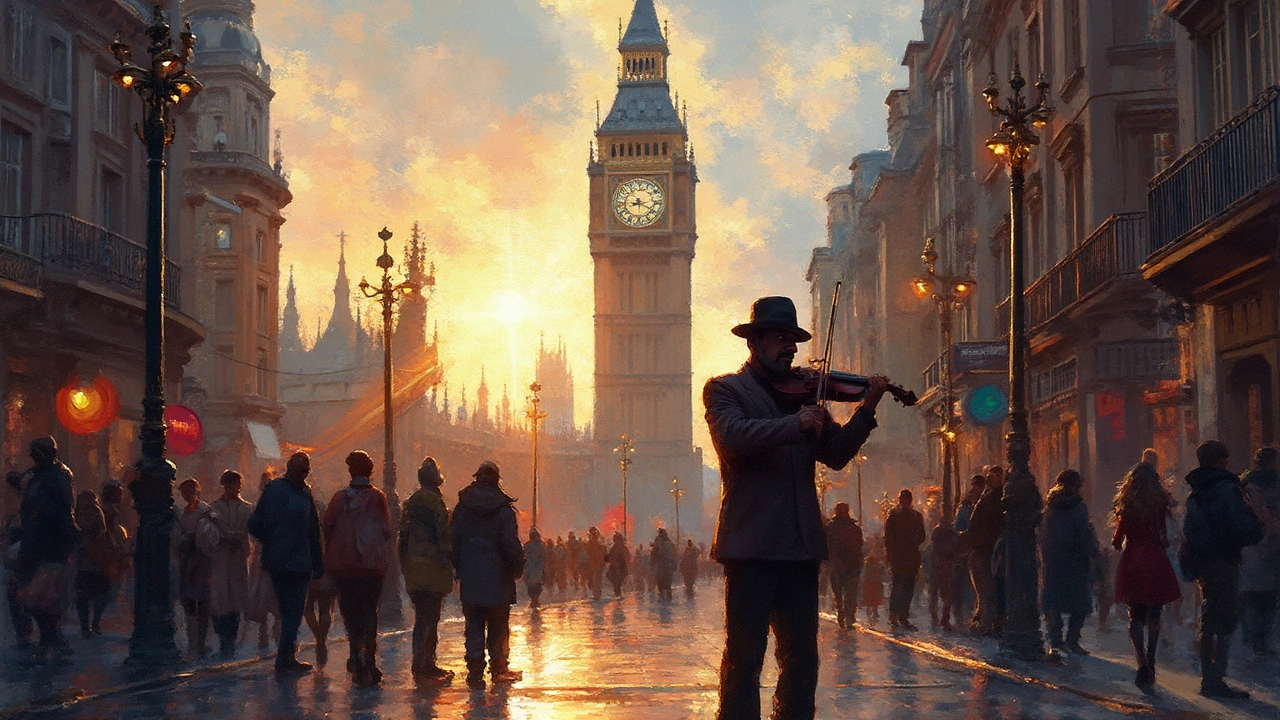
Ever wondered what a day in the life of Big Ben looks like? This towering structure isn't just a pretty face; it plays a key role in London's daily rhythm. Pretend you're a fly on the wall, watching the gears turn and the bells chime from the inside.
This iconic clock tower has been standing tall since 1859, and keeping it in pristine condition is no small feat. From cleaning and repairs to ensuring the clock keeps perfect time, the behind-the-scenes operations are nothing short of fascinating.
But it's not all about nuts and bolts. There's an intriguing history woven through every nook and cranny. Big Ben is not just a clock; it's a symbol of England's resilience and grandeur. Stay tuned as we delve deeper into what makes this landmark tick, literally and metaphorically!
- Introduction
- History and Significance
- Daily Maintenance and Operations
- Visiting Big Ben
- Fun Facts and Trivia
Introduction
Big Ben isn't just any clock; it's a symbol that has been part of London's skyline for over 160 years. Officially known as the Great Bell, Big Ben forms part of the Elizabeth Tower, standing proudly at the north end of the Houses of Parliament. But let's get one thing clear right away: when people talk about Big Ben, they're often referring to the whole clock tower, not just the bell inside.
Since its completion in 1859, Big Ben has witnessed history unfold. From world wars to jubilant New Year celebrations, it's a silent observer of every major event in the UK's capital. This iconic **landmark** helps define the city and even the country as much as red buses and the Union Jack.
More Than Just a Timekeeper
But how accurate is it? Well, Big Ben is notoriously precise. Thanks to a stack of old penny coins adjusting the clock’s pendulum, its timekeeping is impeccable. A simple yet ingenious solution—stacking or removing pennies—can alter the clock's timing by two-fifths of a second per day.
Throughout its long history, Big Ben has only stopped a few times, mostly for maintenance or unexpected events like heavy weather or when a flock of starlings decided to perch on its hands in 1949. Despite being such an antique, Big Ben rarely misses a beat.
A Cultural Icon
Big Ben also holds a cultural significance far beyond its practical duty of telling time. It's a frequent star in films, postcards, and countless travel selfies. An impressive spot in pop culture and media has solidified its status as a must-visit attraction for tourists and a beloved symbol among locals.
Whether you're a history buff or just fascinated by engineering marvels, Big Ben offers a glimpse into Britain's storied past and its unwavering sense of tradition. As we explore what goes on behind the scenes of this magnificent clock tower, it becomes clear that Big Ben is more than just a timepiece—it's a testament to human ingenuity and resilience.
History and Significance
Big Ben isn't just a clock; it's a powerful symbol of London's enduring spirit. Officially named the Elizabeth Tower, this iconic landmark looms over Westminster, part of the Houses of Parliament. And its story is as remarkable as its presence.
The clock tower was completed in 1859, designed by Augustus Pugin. Hard to believe, but its original name wasn't Big Ben, which is actually the nickname of the clock's largest bell. This bell has a resonating note of E natural and weighs over 13 tons!
Big Ben has witnessed over 160 years of British history, including two World Wars. During World War II, the tower survived bombing raids, and the clock continued ticking, its majestic face glowing even under blackout conditions.
The clock mechanism is a masterpiece of Victorian engineering. Designed by Edmund Beckett Denison and installed by George Airy, it's accurate to within one second every two weeks. Quite the feat for a giant timepiece!
Why It Matters
More than just an architectural wonder, Big Ben serves as a cultural touchstone. It's the chime you hear when you watch New Year's Eve broadcasts from London, signaling the start of another year. For locals and visitors alike, it's a must-see, embodying the city's historic grandeur and contemporary vitality.

Daily Maintenance and Operations
Keeping Big Ben running smoothly is like maintaining a giant grandfather clock, only bigger and way more intricate. This iconic clock tower has a team dedicated to ensuring it chimes on the dot. These folks are known as clock mechanics, and their workday starts early, long before most of us are even out of bed.
One of the first tasks each morning is to wind the clock. Yes, even with all the tech around, Big Ben stays true to its old-school roots. The mechanics use a hand crank to wind up giant weights that power the clock for the entire day. Miss a winding session, and you could have Londoners wondering why they're late for tea!
"Working on Big Ben isn't just about keeping time; it’s about preserving history," said one of the clock mechanics in an interview with the BBC.
Regular Checks and Repairs
Every week, a team of specialists checks the clock’s mechanisms. They pay close attention to the pendulum, oiling moving parts and replacing worn-out pieces. Clocks, even famous ones, can wear out, and Big Ben is no exception.
| Task | Frequency |
|---|---|
| Winding | Daily |
| Mechanical Inspection | Weekly |
| Detailed Maintenance | Annually |
Weather and Time Adjustments
Interestingly, even the clock here has to deal with British weather. Changes in temperature can affect the metal parts and throw off the time. To counter this, mechanics use old pennies as weights on the pendulum to adjust the timing. Adding or removing a penny can change the clock’s speed by about 0.4 seconds per day!
The dedication to maintaining such an important monument runs deep. The work done by these unsung heroes ensures that the clock remains a reliable symbol of London’s heartbeat, day in, day out.
Visiting Big Ben
Thinking about catching a glimpse of Big Ben? You're in for a treat, as this landmark is one of London's must-see attractions. Although the clock tower is officially called the Elizabeth Tower, we all know and love it as Big Ben.
Location and Getting There
You can find Big Ben in the heart of Westminster, right next to the Houses of Parliament. The nearest tube station is Westminster, which is on the Jubilee, Circle, and District lines—super handy. From there, it's just a short walk away. If you're coming by bus, several routes drop you within walking distance, offering a lovely view as you approach.
Best Time to Visit
While Big Ben is stunning any time of the day, visiting it in the early morning can be a quieter experience. Sunset provides a picturesque view too, with the tower beautifully lit up as the sky changes colors.
Guided Tours
Though tours inside the clock tower are currently restricted to UK residents due to security reasons, they offer fascinating insights and include views from the belfry. For now, international visitors can still enjoy tours of the nearby Parliament.
Accessibility
The area around Big Ben is wheelchair-friendly with specific routes to ensure everyone can enjoy its splendor. It’s good to know these details before planning your visit. Also, be prepared for some crowd, especially during peak tourist seasons!
Nearby Attractions
Don't stop at Big Ben. The surrounding area is packed with other landmarks. You can take a stroll along Westminster Bridge to the Southbank Centre or visit the Churchill War Rooms. Piccadilly Circus is only a short trip away too.
| Attraction | Walking Distance |
|---|---|
| London Eye | 12 minutes |
| Trafalgar Square | 15 minutes |
| Buckingham Palace | 20 minutes |
Visiting Big Ben is not just about the clock; it's about soaking in the history and culture of London. Remember to snap some photos, grab a coffee nearby, and simply enjoy the vibe!

Fun Facts and Trivia
Big Ben isn't just a clock—it's a treasure trove of quirky stories and facts. Did you know the term "Big Ben" actually refers to the bell, not the clock tower itself? Officially, the tower is called the Elizabeth Tower, renamed in 2012 to honor Queen Elizabeth II.
The Chime Heard Around the World
The sound of Big Ben's chime is instantly recognizable, right? It was first broadcast by the BBC on New Year's Eve in 1923, and it's been a radio staple ever since. Its distinctive melody even kicks off the news on BBC Radio 4.
Accidental Fame
If you've ever wondered why Big Ben leans slightly, it’s not your imagination. It's extra weight from previous renovations and London's underground made it lean about 0.26 degrees—nothing to worry about, though.
Tickets for Special Occasions
While regular tourists can't enter, special arrangements allow UK residents to tour the inside on special occasions. If you ever get a chance, make sure to climb those 334 steps!
Unprecedented Silence
Big Ben is quiet more often than you think. Maintenance work can silence its famous chime for months at a time. However, they ring it for key events like New Year's and Remembrance Day.
| Fact | Detail |
|---|---|
| Height | 96 meters |
| Weight of Bell | 13.5 tons |
| Material of Bell | Copper and Tin |
| Stairs | 334 steps |
Exploring these tidbits makes you appreciate London's beloved Big Ben in a whole new light, doesn’t it?







